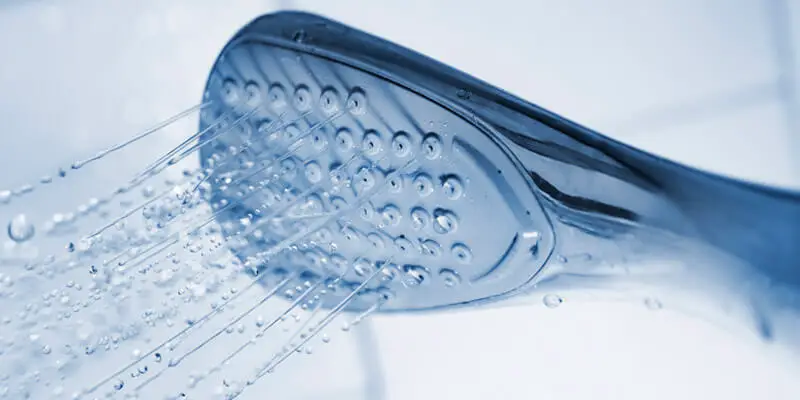It is not unexpected that mold is attracted to the shower caulk in your bathroom, as you are not the only homeowner dealing with this issue.
The purpose of using shower caulk is to keep the bathroom moist and mold-free. Two types of caulk may be applied in the shower:
- Silicone
- Latex
For a stone bathroom, silicone is good. Conversely, latex is for tile and fiberglass bathrooms. But the question is, if these caulks are waterproof, then how can mold grow in such a place? Well, there are a bunch of reasons. But in the meantime, knowing how to prevent mildew in shower caulk is our primary concern.
Why Is Preventing Mold Important?
Mold loves to grow in moist and shady areas, so bathrooms, backsplashes, kitchen countertops, and sinks are their favorite places. Moreover, they also love to grow where caulk can be used frequently.
Most of the caulk brands say they are mold and mildew-resistant, and at any level, they are right too. We make a few mistakes and help mold to grow. Preventing mold is important because mold can have various effects on individuals.
It is especially dangerous to children, pregnant women, or people with weak immune systems, skin allergies, respiratory difficulties, and other diseases. If you find black mold in your shower grout, immediately clean it with vinegar.
Moreover, mold in the shower is also unhygienic.
What Are the Causes of Mold Attacks
If there is a lot of moisture in the bathroom, roof, windows, or pipes, mold will grow quickly. Moreover, paper, cardboard, ceiling tiles, and wood would also help mold to grow. Several factors might contribute to the growth of mold in shower caulks. Mold growth might occur if the wallboard behind your caulking becomes damp.
Poor grout could also be a factor. Shower caulk mold can be caused by misplaced tiles that allow water to leak in. Mold growth can also be prevented by using shower caulk. Moisture is absorbed into the walls when insulation isn’t installed correctly. Sometimes, water seeps out of the bathroom wall and also results in a mold attack in the shower caulk.
4 Ways to Prevent Mold in Shower Caulk
Mold in a water-resistant shower cannot grow, but it does not mean you are not going to take any steps.
1. Use a sealant or caulk that is water-resistant
Wrong caulking in the shower is a big reason for mold growth. Before applying, do some research and choose a well-known brand. It is better to use clear caulk in a moist place because this type of caulk is not paintable. As a result, mold and dirt cannot be absorbed by caulk.
Therefore, a sealant is a better option for bathtubs and showers than caulk, as it is more water-resistant. In addition to being waterproof, silicone sealant is resistant to temperature fluctuations.
Lastly, choose a caulk or sealant that dries faster than others because a slow-drying caulk can be washed away with the use of water. The silicone and latex combo generally cure in 12 hours. They take two to ten days to become fully cured.
2. Maintain the shower caulk’s tightness and waterproofness
A shower is already a moist place, so avoid keeping them additionally wet. Ventilate your bathroom with a fan or keep the door and window open whenever possible to avoid the growth of mold or mildew around a tub or shower.
Keep your caulk dirt-free as much as possible because cleaning caulk in a small bathroom might be a hassle. By taking regular care of a shower, it is possible to reduce the possibility of mold growth.
3. Clean the shower area regularly
A shower must be cleaned weekly, but cleaning every day while taking a bath may require cleaning once every two weeks. Regular maintenance of the shower decreases the growth of mold and mildew.
So, after each shower, wipe the shower walls and doors with a squeegee or a bath towel. All shower accessories, including brushes and poofs, should be hung to dry thoroughly and clear the drain of extra hair.
Make certain that all of these tasks are completed with the proper tools and materials. To do this, tools and materials are needed.
Tools:
- Sponge
- Gloves
- Brush
- Squeegee
- Damp cloth
Material:
- Ammonia
- Vinegar
- Baking Soda
- Bleach
- Warm water
4. Evaluate the temperature
Utilizing dehumidifiers is an excellent method for maintaining optimum relative humidity levels.
Indoors, relative humidity typically ranges from 40 to 50 percent when the temperature is between 68- and 72-degrees Fahrenheit.
To avoid mold growth and reproduction, it will be necessary to examine the temperature of the bathroom and identify the source of any water leakage.
FAQ
How to clean black mold from shower caulk?
Why does my shower caulk go moldy?
How do you prevent mold from silicone caulking?
Final Thoughts
Mold in shower caulk is dangerous, and there is no doubt. There are low chances that mold cannot be prevented without following the mentioned ways. So, it is essential to know how to prevent mold in shower caulk to keep the bathroom up to date.
Want to Learn More:
- How To Remove Wet Silicone Caulk – 5 Easiest Steps To Doing It
- How To Remove Mold From Under Silicone Caulk (5 Steps Process)
- How To Use Liquid Nails With And Without A Caulking Gun?
- Why Does My Caulk Keep Cracking (7 Ultimate Reasons)
Hello! this is John Cox. If I’m not wrong, you love Home. Right? And you already met one of them who’ve been in this field since 2005 and still go on. According to my interest, I’ve started this blog to share my thoughts about Home sectors, and you’ll love it.


